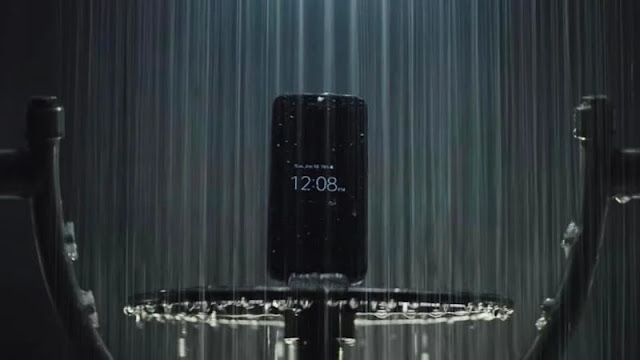IP ratings relate to how resistant to both dust and water your tech is but what's the difference between the likes of IPX7 and IP68? We explain all.
Thankfully, manufacturers have picked up on this need and have been building devices that boast varying levels of water-resistance, which range from being able to withstand a light mist, to coming out of a full-on dunking unscathed.
Waterproof vs water-resistant
Before we proceed, it's import to highlight the distinction between waterproof and water-resistant.
Most mainstream phones don't employ waterproof designs and instead offer water-resistance - the ability to withstand being exposed to water for a certain period of time without suffering any adverse effects.
'Waterproof' suggests that a device is designed to withstand being exposed to water for the duration of its intended lifespan, without issue.
IP ratings
Then, there's the matter of IP ratings to consider. Not all water-resistant phones are created equal and different devices offer different levels of protection.
Being splash-proof, for example, doesn't mean you can watch TV in the bath or take photos underwater, while some devices with superior IP ratings won't even flinch under such conditions.
IP stands for 'Ingress Protection' and is used to define the sealing effectiveness of electrical enclosures against intrusion from foreign bodies and moisture.
The first number refers to how a device handles solid particles, like dust. The highest rating is '6', meaning total protection. The second digit refers to water protection and the best you'll see on most phones in 2020 is '8', going by the original IEC standard 60529 (6K and 9K are not part of this).
It's also worth noting that ratings against water ingress are not cumulative beyond 6; so a device with a rating of 7 doesn't have to comply with the water jet element of 5 or 6 (you'll see what we mean below).
If an IP rating has an 'X' in it, don't misinterpret this as the device lacking protection. It's likely to have good protection for particles if it's IPX6, but the rating has not been formally allocated.
Here's a full listing for both particles and water:
Particles (e.g. dust)
- 0 = No protection
- 1 = >50mm, any large surface of the body, such as the back of a hand
- 2 = >12.5mm, fingers or similar objects
- 3 = >2.5mm, tools, thick wires, etc.
- 4 = >1mm, most wires, slender screws, large ants etc.
- 5 = Dust protected. Ingress of dust is not entirely prevented
- 6 = Dust-tight. No ingress of dust; complete protection against contact. A vacuum must be applied. Test duration of up to 8 hours based on airflow
Water
- 0 = No protection
- 1 = Dripping water causes no harmful effects
- 2 = Vertically dripping water shall have no harmful effect with enclosure is tilted at 15°
- 3 = Water falling as a spray at any angle up to 60° from the vertical
- 4 = Water splashing against the enclosure from any direction
- 5 = Water projected by a nozzle (6.3mm) against enclosure from any direction
- 6 = Water projected in powerful jets (12.5mm nozzle) from any direction
- 6K = Powerful water jets with increased pressure
- 7 = Immersion, up to 1m depth for up to 30 minutes
- 8 = Immersion, 1m or more depth (exact details vary)
- 9K = Powerful high-temperature water jets
The next generation of waterproof phones
According to IDC, liquid is the second most common cause of damage in smartphones, accounting for 35.1% of all devices repaired. However, that might change considerably thanks to a new generation of waterproof phones with better protection.
At the moment, phone makers either use physical seals or a nano-coating to keep water out. While the latter is limited to splashes, P2i - a leader in the technology - is working on an improved version of its plasma protection which will be IPX7.
A nano-coating to this level will give partners more freedom with design and could even mean we see more handsets with removable covers and batteries again.



0 comments:
Post a Comment